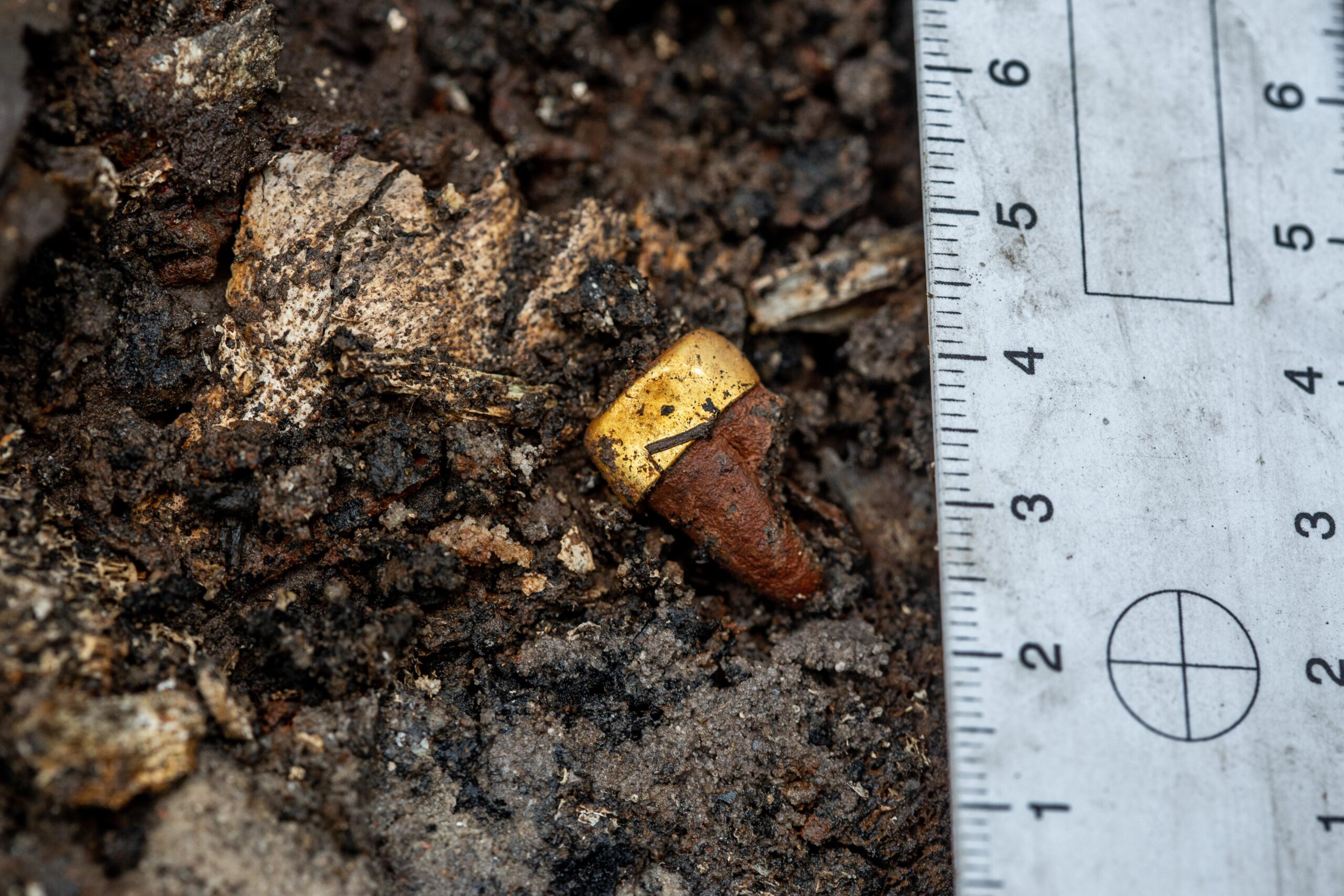Archaeologists have unearthed a mass grave in Poland that they say “documents evidence of the genocide that took place” against Poles by Nazi Germany during World War Two.
In an article published yesterday in the journal Antiquity, a team of researchers led by Dawid Kobiałka of the Polish Academy of Sciences (PAN) described their grim discoveries at a site in what they call the “Valley of Death”.
That is the name locals gave to an area near the town of Chojnice in northern Poland where a large number of mass killings took place in the aftermath of the German invasion and occupation of Poland in September 1939.
The authors report that around 30,000-35,000 Polish citizens were executed at 400 sites in October and November 1939 alone in the region of Pomerania, where Chojnice is located. They suggest that these were “the prelude to later Nazi genocides”.
For their research, however, they focused on a site where a massacre took place near the end of the war, in January 1945. Eyewitness accounts indicate that around 600 Polish prisoners were murdered by the Gestapo, who then burned their bodies to cover up the evidence.
Following archival research and non-invasive scanning of the area, the archaeologists excavated eight trenches used by the Germans to bury the bodies. They discovered over one tonne of human bones, indicating the killing of 400-500 people, reports Science Magazine.
Prosimy o kontakt z #IPNGdańsk @ipngovpl wszystkie osoby, których krewni stracili życie z rąk funkcjonariuszy i współpracowników III Rzeszy na terenie Chojnic oraz powiatu chojnickiego. Kontakt i szczegółowe informacje ⤵️https://t.co/1ErRfdVGeY pic.twitter.com/dM22Xmkytz
— IPN Gdańsk (@IPNGdansk) June 7, 2021
“I’m an experienced archaeologist, but I’ve never experienced anything like this,” Kobiałka, who grew up in Chojnice, told Science. “It was really a horror.”
Personal effects of people killed in both 1939 and 1945 were also found, as well as objects left by the German perpetrators, including over 400 bullet and shell casings. Ballistics experts have identified them as types commonly used by the Gestapo and German police units.
Preserved fragments of wood confirmed witness testimonies that the bodies were doused in a flammable substance and set alight. Archival research indicates that those killed were members of the underground Polish resistance.
The researchers now hope that a combination of that archival research, the personal effects discovered, and planned DNA sampling will allow them to identify some of the victims. Afterwards, the remains will be reburied and the site turned into an official war cemetery.
“We hope to be able to tell some of the families what happened to their relatives who, for decades, were assumed to have vanished without trace in Chojnice in January 1945,” they write. Their research has been supported by Poland’s Ministry of Culture and National Heritage and the Institute of National Remembrance.
A gold wedding ring found during excavations has already allowed them to identify one victim as Irena Szydłowska, a courier in the Polish Home Army. Her son died in 2004 never knowing his mother’s fate, but prosecutors have located his daughter and the ring will be returned to her, reports Science.
The magazine also notes that the research is the first to systematically apply archaeological techniques to Second World War mass graves outside concentration and death camps.
During the German occupation of Poland, around six million Polish citizens were killed. Half of them were Jews, constituting around 90% of Poland’s pre-war Jewish population. The majority of the remaining three million were ethnic Poles, many of whom died in concentration camps and mass shootings.
“Despite the Nazis’ efforts to hide their crimes, material evidence of the killings, preserved to the present day and discovered in 2020, bears witness to the massacre and tells the story 75 years later,” write the authors of the new study.
Main image credit: IPN press materials

Daniel Tilles is editor-in-chief of Notes from Poland. He has written on Polish affairs for a wide range of publications, including Foreign Policy, POLITICO Europe, EUobserver and Dziennik Gazeta Prawna.




















